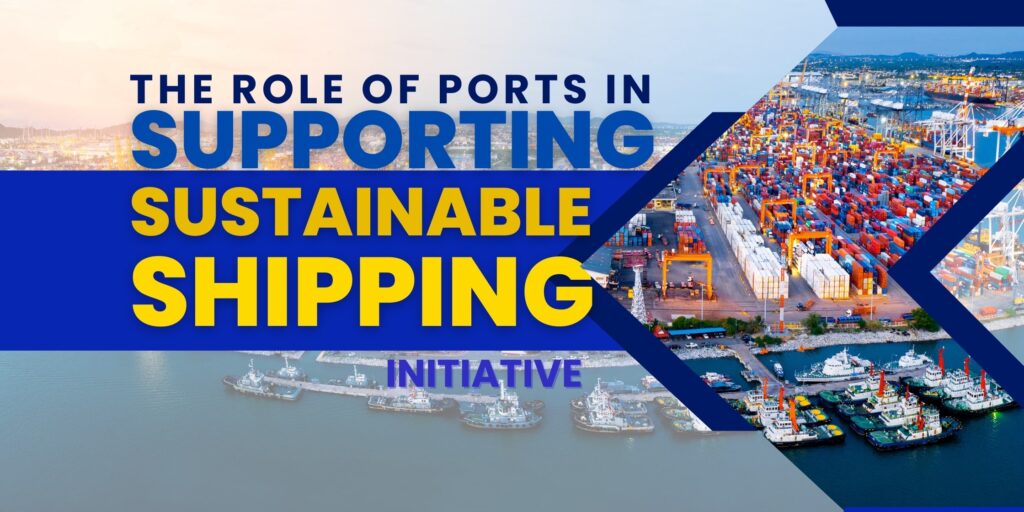In today’s world, sustainability stands out as a key trend. While the maritime industry plays a crucial role in global trade and economy, it concurrently contributes significantly to climate change. The imperative for sustainability has heightened in recent years, exacerbated by issues such as the pandemic. Addressing these challenges is now pivotal for the maritime sector to navigate a more environmentally responsible and resilient future.
With a tenure of 28 years in the maritime industry, I have observed an unparalleled challenge. The industry faces a critical question regarding sustainability, given its contribution of 2 to 3% to global greenhouse gas emissions. This reality underscores the pressing need for strategic interventions and collaborative efforts to ensure a sustainable and environmentally responsible future for the maritime sector.
“Sustainability isn’t just about the environment; it’s about people too. Ensuring the well-being of seafarers, providing training on eco-friendly practices, and fostering a culture of responsibility are equally important in this journey,”
I think that the ports have a crucial role to play in making the sustainable shipping initiative true. In this blog, I will discuss the pivotal responsibilities taken by the seaports to drive the sustainability agenda within the maritime sector.
A strategic perspective for ports:
Are you familiar with the term ‘Green Ports’?
You must be aware of the fact that the ports work as the backbone of connectivity between land and sea, which also hold a unique position in the global supply chain. Recognizing their strategic importance, many ports worldwide are pivoting towards the concept of “green ports.” Additionally, according to various reports, the green ports have the potential to reduce carbon emissions by up to 30%.
These environmentally conscious ports are at the forefront of change, committing themselves to minimizing their ecological footprint, promoting energy efficiency, and embedding sustainable practices into the core of their operations.
Every port should be investing in advanced green technologies and infrastructure upgrades to reduce its carbon footprint. From electrifying cargo handling equipment to implementing energy-efficient lighting, ports should be determined to make a difference.
Upgrading infrastructure for a sustainable tomorrow:
I believe that the shift in port infrastructure is a key catalyst for sustainable shipping initiatives. Several ports are spearheading the integration of smart technologies and innovative solutions to streamline operations and minimize environmental impact.
Automated cranes, optimized logistics, and the adoption of eco-friendly cargo handling equipment are not just operational enhancements but strategic maneuvers that significantly contribute to more sustainable and efficient port operations.
“Remember, that the sea connects us all. Our actions today shape the oceans of tomorrow. Let us navigate towards a greener horizon, where sustainability is not just a goal but a way of life.”
Waste management and pollution control:
The environmental challenges associated with shipping, including waste management and pollution control, immediately need to be acknowledged by responsible ports.
Several factors need to be considered as well as implemented to manage and reduce the impact of both hazardous and non-hazardous waste generated by maritime activities, as mentioned below:
- Robust waste disposal systems
- State-of-the-art treatment plants
- Proactive recycling initiatives
Additionally, ports are implementing stringent measures to control air and water pollution, safeguarding the delicate ecosystems surrounding their facilities and reinforcing their role as environmental stewards.
I believe that through these strategies, we not only manage the impact of maritime activities but also safeguard the delicate ecosystems surrounding our facilities. It is not just a duty; it is a testament to our role as custodians of the seas, committed to leaving a legacy of sustainability for generations to come.
Collaborative Endeavors and Regulatory Adherence:
The journey towards sustainability in shipping is inherently collaborative. Ports are increasingly recognizing the need for multi-stakeholder engagement, actively partnering with shipping companies, government agencies, and environmental organizations to develop and implement sustainable practices.
“Collaboration is key. We’re exchanging ideas and technologies to ensure that sustainability isn’t a luxury but a global standard.”
In addition, adherence to and influence on regulatory frameworks are imperative, and ports are working diligently towards compliance with international standards, notably the emission reduction targets set by the International Maritime Organization (IMO).
Paving the way for maritime innovation:
Innovation is the lifeblood of sustainability, and ports are actively investing in research and development of green technologies to propel maritime innovation. This includes the development of cleaner propulsion systems, the exploration of alternative fuels, and the promotion of eco-friendly vessel designs.
By supporting and incentivizing the adoption of these technologies, ports are not merely passive participants; they are dynamic contributors shaping the future of the maritime industry. It can open up various crucial opportunities for entrepreneurs who are interested in investing in the maritime industry.
Educational initiatives:
According to my opinion, beyond their operational and infrastructural changes, ports serve as educational hubs, disseminating knowledge and awareness about sustainable practices in the maritime sector.
Through targeted workshops, comprehensive training programs, and impactful awareness campaigns, ports have the potential to influence the behavior of shipping companies, logistics providers, and other stakeholders, fostering a pervasive culture of sustainability within the industry.
Additionally, I also want the ports to focus on the crew welfare and the human element as these are integral to sustainable shipping.


